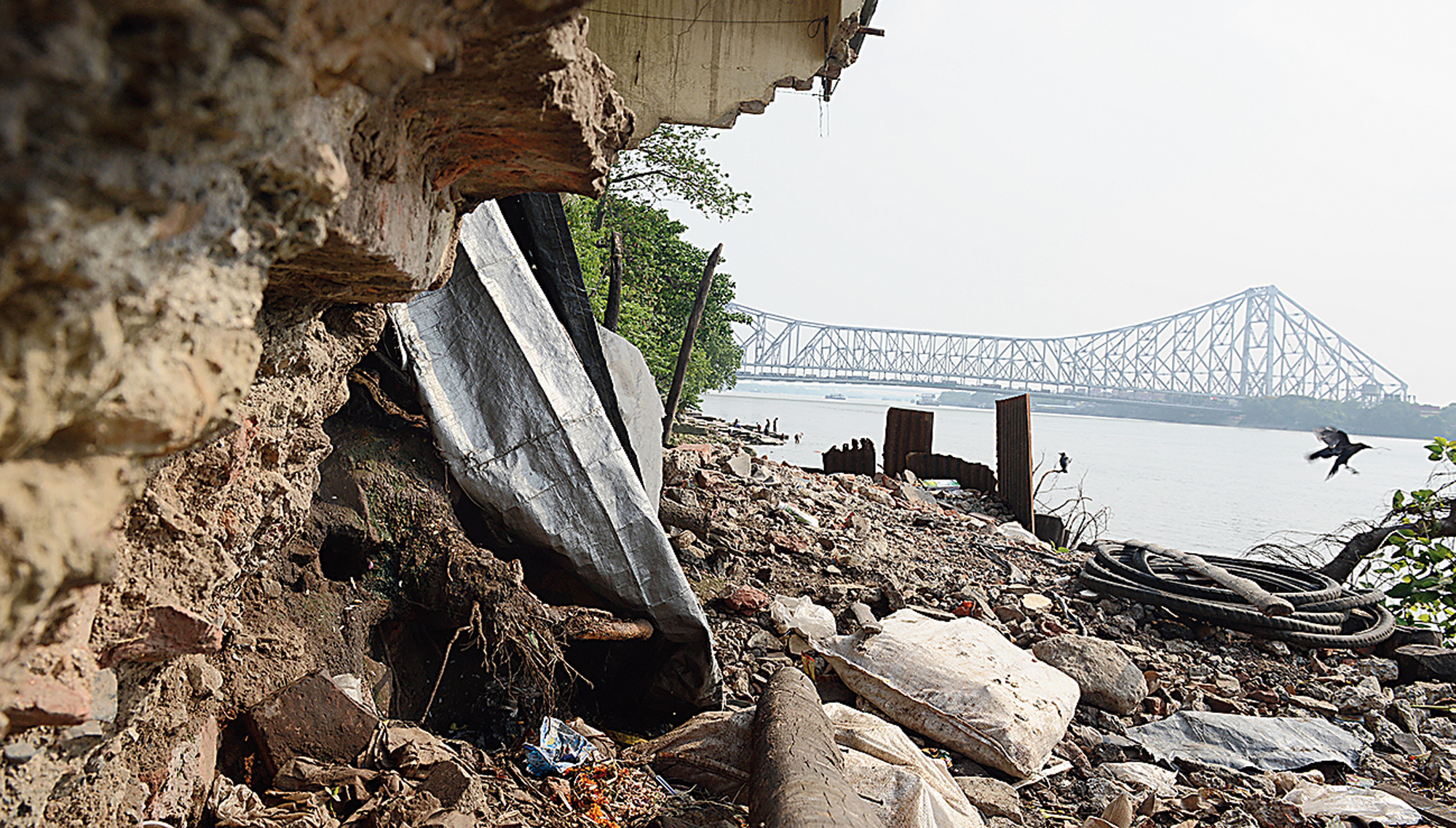A draft performance audit report on Rejuvenation of the Ganga pointing out Bengal government’s failure in checking pollution in the river has left the top brass of the administration grappling for answers.
According to sources, the draft report has come as an embarrassment for the state government as it makes it clear that a handsome amount of central funds was either misused or misappropriated.
“The draft report has hit the nail on its head. No state government would like to face such questions ahead of the Lok Sabha polls,” said an official, who has gone through the report.
The principal accountant general (general and social sector, audit), M. S. Subrahmanyam, has sent the draft report to finance secretary H. K. Dwivedi for the state government’s views on the issue. Once the state’s views are given, the draft note will be included in the report of the comptroller and auditor general (CAG) for the year ended on March 31, 2018.
“It is a practice to seek state government’s clarification in case any loophole is pointed out before the final CAG report is published. But we are finding it difficult to plug the loopholes as the points raised in the audit report are absolutely correct,” said a senior official at Nabanna.
The Telegraph takes a closer look at the draft report, which covered the period from 2013-14 to 2017-18 and conducted between July and October, 2018.
Waste management
The report said the objective of discharging only treated municipality wastewater into the river remains unachieved even after spending Rs 752.36 crore for construction or upgrade of sewage treatment plants in the past few years. This is because majority of plants did not function properly. There are a total of 44 municipalities along the river in Bengal.
A total of 43 sewage treatment plants (STP) were constructed with the funds provided under central schemes. The cash was released to treat wastewater of 33 municipal towns. There was no STP to treat wastewater for 11 civic bodies.
The audit found that only two of the 44 existing STPs were being operated effectively to treat municipal wastewater. The report said due to the non-functional STPs, untreated wastewater of almost all the municipalities was finally discharged directly to the river through 59 major drains. The total discharge was 6419.14 million litres per day with the organic load of 190.41 tons per day.
The audit also expressed concern over non-existence of STPs in 11 municipalities — Arambagh, Tarakeswar, Hooghly-Chinsurah, Dankuni, Uluberia, Kanchrapara, Santipur, Ranaghat, Panihati, Chakdah and Haldia. The report said there were many other drains which also discharged municipal wastewater directly to the Hooghly. “The quantum of sewage being discharged through these minor drains was, however, not available,” the draft report read.
The sources said the audit pointed out a grave picture as organic pollution in the rivers causes harm to human beings and the aquatic life. Untreated urban sewage contains pathogens that cause a variety of diseases, including diarrhoea1, globally leading cause of illness and death. Second, accumulation of organic pollutant stimulates microbial growth, leading to oxygen depletion and ultimately causes harm to the entire river ecosystem.
Lack of management
The audit carried a test-check in 22 municipalities and found out that 16 of them had designated dumping places of solid waste authorised by the West Bengal Pollution Control Board (WBPCB). But none of the municipalities had tried to obtain revalidation of the dumping places from the authorities concerned after expiry of the permission from the WBPCB.
During physical verification in three municipalities, the audit team pointed out that the civic authorities were dumping solid waste on the bank of the river. The team also found that five brick kilns on the bank of river in Baidyabati municipality were dumping waste on the riverbank resulting in disruption of the flow of the river.
The report also highlighted discharge of fly ash into the river by the CESC power plant in Khardah. The audit did not find any record in the civic bodies or the departments concerned that indicate that adequate steps were taken to arrest such uncontrolled discharge of waste into the river.
Faulty monitoring
Inadequate quantum of inspection of high and medium risk category polluting industrial units along the river and the way fresh ‘consent to operate’ licenses were issued or renewed bypassing mandatory inspection of the treatment procedure of the units caused trouble to the river, the audit observed.
The report said the state failed to set up common effluent treatment plant for polluting industrial units even after four years since the National Green Tribunal issued a directive in this regard.
The audit also pointed out that the problems were compounded by the fact that as many as 797 (77 per cent) hazardous waste generating units were functioning without valid authorisation and 804 hazardous units were either not disposing waste following norms or retaining waste beyond permissible limit. The audit also pointed out that illegal sand mining in areas like Uluberia municipality pose serious threat to the riverbank.
Results of the apathy:
The audit said lack of focussed approach on the part of the Bengal government in ensuring proper monitoring and control over waste management and other deficiencies had collectively affected the river.
The audit team identified the results of the failure:
The faecal Coliform and biological oxygen demand levels in the river have risen alarmingly, affecting the aquatic food chain and the ecological flow of water adversely.
Uncontrolled constructions abutting the river through encroachment interrupted the flow of the Hooghly.
Several industrial units were found discharging trade effluents in violation of prescribed standards.










